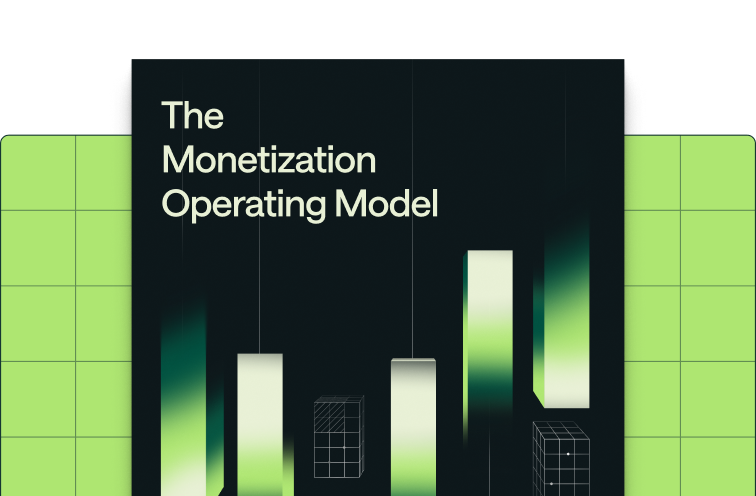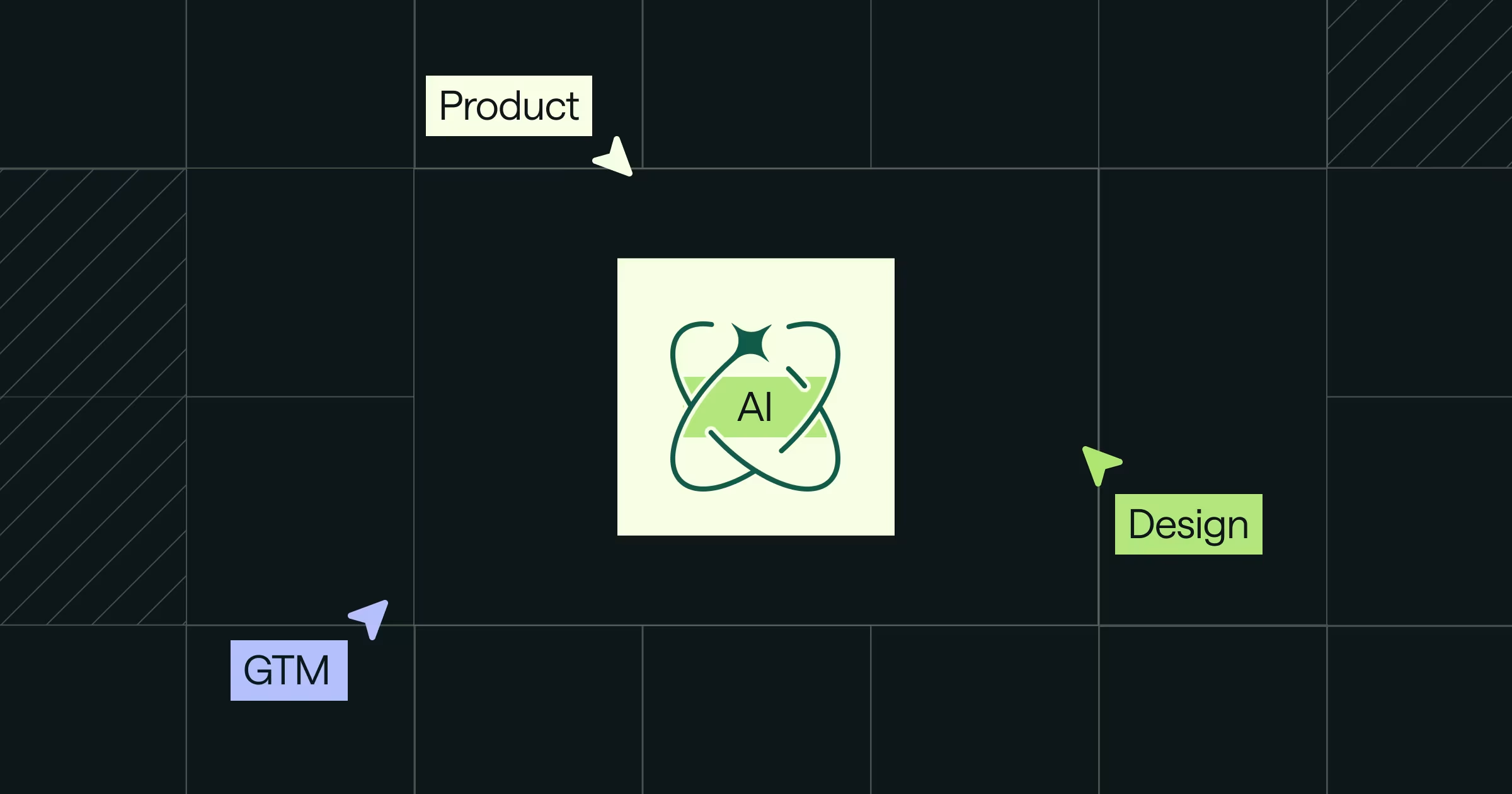Share
According to research on technical debt management, teams spend substantial portions of development time on maintenance work. When pricing logic lives in application code, engineering teams regularly dedicate significant sprint capacity to billing infrastructure instead of product features. The moment you propose a new pricing tier, your backlog swells with checkout updates, invoice templates, and edge-case reconciliations. Instead of shipping competitive features, developers patch billing code and run spreadsheet audits.
This infrastructure constraint forces false choices between pricing innovation and engineering velocity. Modern software companies routinely abandon pricing experiments because their underlying systems can't support rapid testing without breaking existing workflows.
According to McKinsey research, a long-term pricing advantage can account for 15 to 25 percent of a company's total profits. In the same research, they note that only 24% of SaaS companies regularly conduct pricing experiments, leaving significant revenue opportunities unexplored.
These experiments help you learn which pricing structures drive conversion, expansion, and retention before committing to company-wide changes. Whether you're testing subscription tiers, usage-based rates, or hybrid models, systematic testing beats intuition.
The challenge isn't designing experiments, it's having infrastructure that can execute them. Legacy billing systems treat pricing as hardcoded business logic rather than configurable parameters. Each test requires engineering work, cross-system coordination, and manual verification processes that delay insights for months.
This creates a compounding tax on growth. Product leaders wait weeks to validate pricing hypotheses while competitors iterate rapidly. Finance teams forecast revenue without confidence because pricing variants exist in spreadsheets rather than integrated systems. Engineering managers watch talented developers maintain billing infrastructure instead of building features that differentiate products in competitive markets.
Companies like OpenAI and Databricks avoid these constraints because they've invested in infrastructure that treats pricing changes like product deployments. These organizations can test new pricing approaches, measure results, and implement changes in days rather than quarters.
Successful pricing experiments require infrastructure that treats pricing as configuration, not code. The following framework breaks down five integrated layers that enable pricing agility: real-time usage data pipeline, flexible pricing engine architecture, billing systems designed for complexity, customer transparency and control, and experimentation analytics framework.
These layers work together to turn pricing complexity from an operational burden into a competitive advantage, enabling you to test, learn, and iterate on pricing strategies as quickly as you ship product features.
{{widget-monetization-whitepaper}}Why most companies can't run pricing experiments
You recognize the pattern the moment a pricing idea surfaces in planning meetings: excitement from Product, concern from Finance, and visible stress from Engineering. The infrastructure constraints usually win.
Engineering teams carry an invisible burden. According to billing infrastructure, teams with significant maintenance loads struggle with feature development velocity. Development squads that should focus on roadmap features instead spend time maintaining billing logic: feature flags for pricing variants, usage data backfills, custom rate applications, and migration scripts. When pricing logic lives in application code, even simple tests require branching production systems, running QA on invoice accuracy, and coordinating deployment schedules. Every sprint spent on billing infrastructure reduces time available for product differentiation.
Revenue quietly leaks while engineers wrestle with disconnected systems. Manual adjustments in spreadsheets, delayed usage imports, and mismatched pricing versions create write-offs that don't appear on standard dashboards. Research on software development processes shows that clean data integration is essential for reliable business operations. Clean data integration is the foundation for trustworthy experiments. Inconsistent pricing data makes it impossible to draw reliable conclusions from test results.
Finance leaders face different challenges: forecasting becomes unreliable when pricing complexity grows. Hybrid contracts combine base fees, usage charges, and promotional terms, but legacy systems aggregate them long after the period closes. Without unified visibility, teams resort to simplified projections that ignore consumption volatility. The result is missed revenue targets and declining confidence from leadership.
Product managers encounter forced binary choices. Subscription logic typically lives in one system, usage rating in another, and the two rarely integrate cleanly. This technical separation forces you to choose subscription or usage exactly when products need flexible pricing that matches different customer segments and value delivery patterns. When infrastructure can't express hybrid concepts, innovation stops at the concept stage.
Even when teams overcome technical hurdles, experiment results often prove unreliable. Pricing variants must apply consistently from marketing pages through final invoices, but legacy systems create gaps where customers see different rates at different touchpoints. Time-bound experiments and research from Statsig demonstrate that statistical rigor separates actionable insights from expensive false signals. Teams frequently celebrate conversion improvements that never translate to recognized revenue because assignment logic breaks somewhere between checkout and billing.
Infrastructure constraints compound when market timing matters. Companies with flexible systems deploy pricing adjustments through API calls within hours, while those managing legacy platforms wait multiple sprints for engineering resources. Research from OpenView Partners shows that companies regularly testing pricing achieve substantially higher growth rates than those maintaining static models. When competitors can respond to market changes in days while you need months, delayed pricing updates create sustained competitive disadvantages.
Successful pricing experiments require infrastructure that eliminates these bottlenecks rather than working around them.
The complete infrastructure framework for pricing experiments
Companies like OpenAI, Databricks, and Anthropic iterate pricing weekly rather than quarterly because they've built infrastructure that treats pricing changes like product feature deployments: fast, safe, and data-driven.
This capability comes from a five-layer infrastructure framework that addresses specific operational bottlenecks:
- Real-time usage data pipeline: captures consumption events with sub-second latency
- Flexible pricing engine: enables business teams to modify rates without engineering
- Billing systems designed for complexity: handle experimental variants automatically
- Customer transparency tools: provide visibility and spending controls
- Experimentation analytics: connect tests to measurable business outcomes
Each layer solves specific bottlenecks, and together they enable pricing agility that compounds competitive advantage.
Real-Time Usage Data Pipeline
Accurate usage measurement is the foundation for pricing any product where value scales with consumption. Whether you're testing subscription models with usage components or pure consumption pricing, clean usage data enables precise billing and real-time cost visibility.
Start with a canonical event schema that captures essential information:
- Account identifier for associating usage with billing entities
- Metric name defining what's being measured
- Quantity showing consumption volume
- Unit specifying measurement standards
- Timestamp marking when activity occurred
- Idempotency key preventing duplicate charges
Schema evolution requires versioning because small changes, renaming "API calls" to "requests," can break downstream calculations. Event-driven architectures handle millions of events per second while maintaining the sub-second latency needed for real-time dashboards and spending controls.
Streaming platforms enable real-time aggregation and enrichment, joining usage events with active pricing rules so customers see current spending instead of yesterday's totals. This approach keeps data warehouses focused on historical analytics while hot data powers low-latency applications.
System safeguards prevent data quality issues that contaminate experiments. Lag monitors track event throughput, schema validators reject malformed data, and anomaly detectors surface usage spikes that could indicate billing disputes. When late events arrive, event-time processing ensures they're attributed to correct billing periods rather than creating duplicates or gaps.
Flexible pricing engine architecture
Usage data becomes revenue through a pricing engine that enables business teams to modify pricing without engineering dependencies. Modern pricing catalogs treat every charge component --- subscription fees, usage rates, minimum commitments, discounts --- as versioned configuration rather than hardcoded logic.
Business users need interfaces for managing pricing catalogs with audit trails, comparison views, and rollback capabilities. Deterministic identifiers follow customers from marketing sites through sales tools into billing systems, ensuring experiment assignments remain consistent throughout the customer journey.
Hybrid pricing models stress-test catalog flexibility. You might combine base platform fees, per-seat charges, and consumption-based API pricing in single contracts. Supporting multi-component plans requires inheritance structures so you don't duplicate logic across pricing variants.
Version control is essential for reliable experiments. Every pricing change: adding tiers, adjusting rates, modifying discount structures, creates new immutable versions that existing customers retain while new cohorts enter experiments. This separation between catalog evolution and customer entitlements enables A/B testing different rate structures without data migrations or code deployments.
Regional pricing, enterprise customizations, and partner channel variations multiply complexity exponentially. Flexible architecture handles these requirements through configuration rather than custom development, enabling rapid market expansion and segment-specific pricing strategies.
Billing systems designed for complexity
Accurate invoices build customer trust and enable reliable experiment measurement. Traditional billing systems assume simple scenarios---one plan per account, monthly billing cycles---that break when you introduce experimental constructs like graduated discounts or mid-cycle pricing changes.
Modern billing systems rate usage against active pricing versions, generate itemized line items, and apply tax rules automatically. Consumption-based models require idempotent rating, proration logic, and adjustment workflows that finance teams can audit without technical investigation.
Revenue recognition adds complexity that affects experiment measurement. While revenue recognition automation may live in separate systems, invoices must include sufficient metadata: service periods, performance obligation identifiers, currency conversions for finance teams to book revenue correctly. Missing or incorrect data creates reconciliation work and undermines confidence in experiment results.
Integration with enterprise systems happens through APIs and event streams rather than file exports. Contract amendments flow from sales tools to billing, invoices sync to accounts receivable, and experiment metadata remains intact for cohort analysis. Every charge traces back to original usage records and the pricing version active when consumption occurred. When customers dispute charges, support teams can reconstruct the complete calculation path quickly.
Customer transparency and control
Pricing experiments succeed when customers understand how charges accumulate and can control their spending. Harvard Business Review research shows that companies excelling at transparent customer experiences build stronger customer relationships and significantly reduce complaints. Real-time visibility that mirrors internal calculations prevents most billing disputes and builds trust that extends through renewal conversations.
Customer portals should display cycle-to-date usage with projected period-end costs, historical trends for budgeting, and invoice previews linking charges to specific activities. Configurable alerts tied to points when customers reach percentage thresholds of commitments or approach overage tiers will provide time for consumption adjustments.
Exposing calculation paths that match internal rating reduces disputes and accelerates payment processing. Self-service controls extend beyond visibility: let customers set spending limits, throttle non-critical workloads, or upgrade mid-cycle without support interactions. API access enables enterprise customers to integrate usage data into their own business intelligence and procurement workflows.
Communication matters as much as tooling. Clear documentation defining each measured unit, rounding rules, and discount applications ensures customer finance teams can reconcile invoices with their internal logs. When introducing experimental pricing, advance notice combined with cost calculators maintains trust during transitions.
Experimentation and analytics framework
Pricing experiments require measurement systems that connect pricing changes to business outcomes. Analytics frameworks stitch together experiment assignments, product usage, conversion events, and financial results to determine whether pricing changes actually improve key metrics.
Start with deterministic assignment logs capturing:
- Account identifiers for experimental subjects
- Variant identifiers specifying treatments received
- Timestamps marking assignment moments
- Assignment methods used for allocation
Choose metrics that balance short-term and long-term business health: initial conversion rates, average revenue per user, gross margins, and early retention signals. Track multiple metrics per experiment to avoid local maxima that improve one metric while degrading others.
Power analysis helps determine sample sizes before launch, preventing underpowered tests that lead to false negatives. During experiments, monitoring dashboards track metrics like churn rates, support ticket volumes, payment failures with predetermined thresholds. If variants breach these limits, automated systems can revert exposed cohorts to control pricing without manual intervention.
Decision frameworks guide interpretation of results. Research from Bain & Company shows that companies excelling at translating pricing insights into action achieve higher returns on their pricing initiatives. Statistically significant conversion improvements mean little if customer acquisition costs increase or expansion revenue decreases.
Integrated across all layers, this infrastructure enables treating pricing changes like product iterations: ship, measure, learn, repeat. The faster this cycle runs, the faster companies compound revenue growth advantages over competitors constrained by legacy systems.
From pilot to production scale
Building systematic pricing experimentation capability starts with disciplined pilots rather than infrastructure overhauls. Early tests surface technical gaps, build cross-functional confidence, and protect revenue while teams learn.
Begin with infrastructure assessment. Verify that pricing catalogs support versioning, usage metering maintains data quality, invoices reflect pricing variants accurately, and revenue reports segment by experiment identifiers. This systematic approach treats pricing as a product requiring dedicated resources and structured processes. This audit often reveals hidden dependencies that derail experiments at scale:
- Hardcoded pricing identifiers that break when rates change
- Manual revenue processes that create reconciliation bottlenecks
- Missing tax calculations for regional pricing variants
- Disconnected systems that require manual data synchronization
Document each gap with assigned ownership and resolve any issues that could create invoice inaccuracies or revenue recognition problems before launching experiments.
Design focused initial experiments. Create experiment specifications that define hypotheses, target cohorts, success metrics, guardrail thresholds, and rollback criteria. Keep exposure limited, typically a small percentage of new customers, so negative outcomes remain contained. Modern products need pricing flexibility that adapts to different customer segments and product evolution. Include leading indicators like conversion rates alongside lagging indicators like net revenue retention to avoid declaring success on short-term improvements that damage long-term value.
Cross-functional alignment prevents common failure modes. Form pricing experiment teams with clear responsibilities: Product sets hypotheses and customer messaging, Engineering implements technical requirements, Finance verifies revenue recognition and compliance, and Operations validates sales tool workflows. Harvard Business Review research shows that cross-functional teams with management support achieve higher project success rates. Shared experiment documentation and regular status reviews keep teams coordinated when approvals or data definitions diverge.
Monitor three operational metrics throughout pilots to ensure experiment health and business protection:
- Deployment speed: measures time from hypothesis to customer exposure
- Billing accuracy: tracks invoice error rates and dispute frequencies
- Customer sentiment: monitors support interactions and satisfaction scores related to pricing changes
Unexpected spikes in disputes or support volume provide early warnings for corrective action. These metrics help distinguish between normal market fluctuations and experiment-related issues that require immediate attention.
When pilots meet success criteria, expand systematically. Increase cohort sizes, add customer segments like international markets, or introduce complexity like hybrid subscription-plus-usage models. Successful pricing strategies often involve segment-specific implementations rather than universal approaches.
Governance scales with program maturity. Maintain living documents: experiment specifications owned by Product, technical implementation guides owned by Engineering, and financial controls checklists owned by Finance and Operations. Maintain living documents while ensuring pricing experiments don't break finance workflows through proper controls and audit trails. Version control these artifacts so teams can trace every change from initial hypothesis through financial impact. Over time, this documentation accelerates future experiments by capturing institutional knowledge and reducing cycle times.
Building competitive advantage through pricing infrastructure
Most companies recognize they need better pricing capabilities but delay action because the infrastructure investment seems overwhelming. Start with one experiment. Audit your current billing stack, identify the biggest constraint (usually usage measurement or pricing configuration( and solve that specific bottleneck first.
Companies that treat pricing as a product build systematic capabilities over time rather than attempting comprehensive overhauls. Begin with focused pilots that validate infrastructure gaps and build cross-functional confidence before scaling complexity.
The alternative is watching competitors with flexible systems capture market opportunities while you're filing engineering tickets for basic pricing changes. Market leaders in the Value Era iterate pricing as fast as they ship features. That advantage compounds over time.
{{widget-monetization-whitepaper}}










